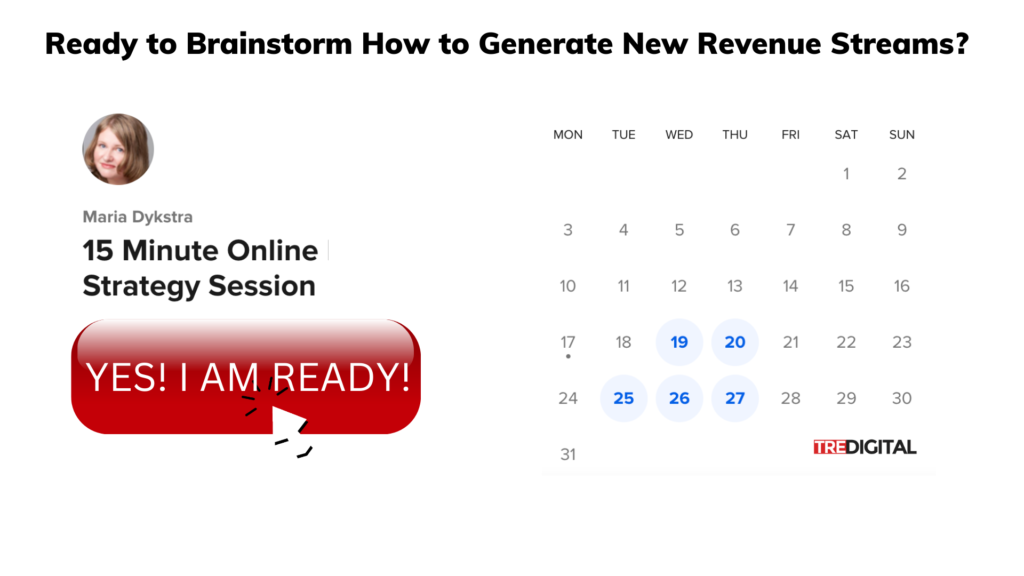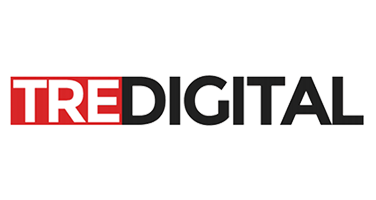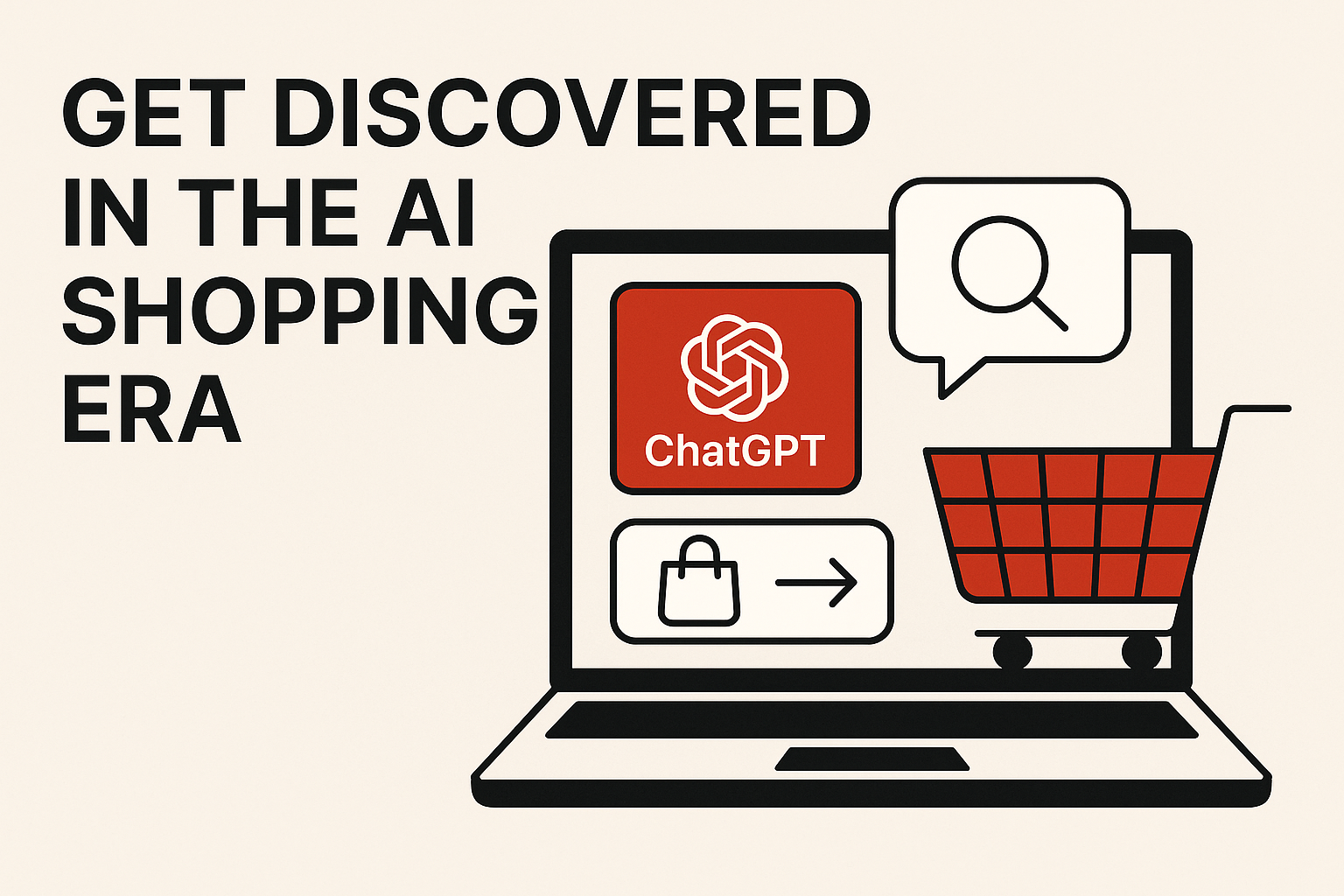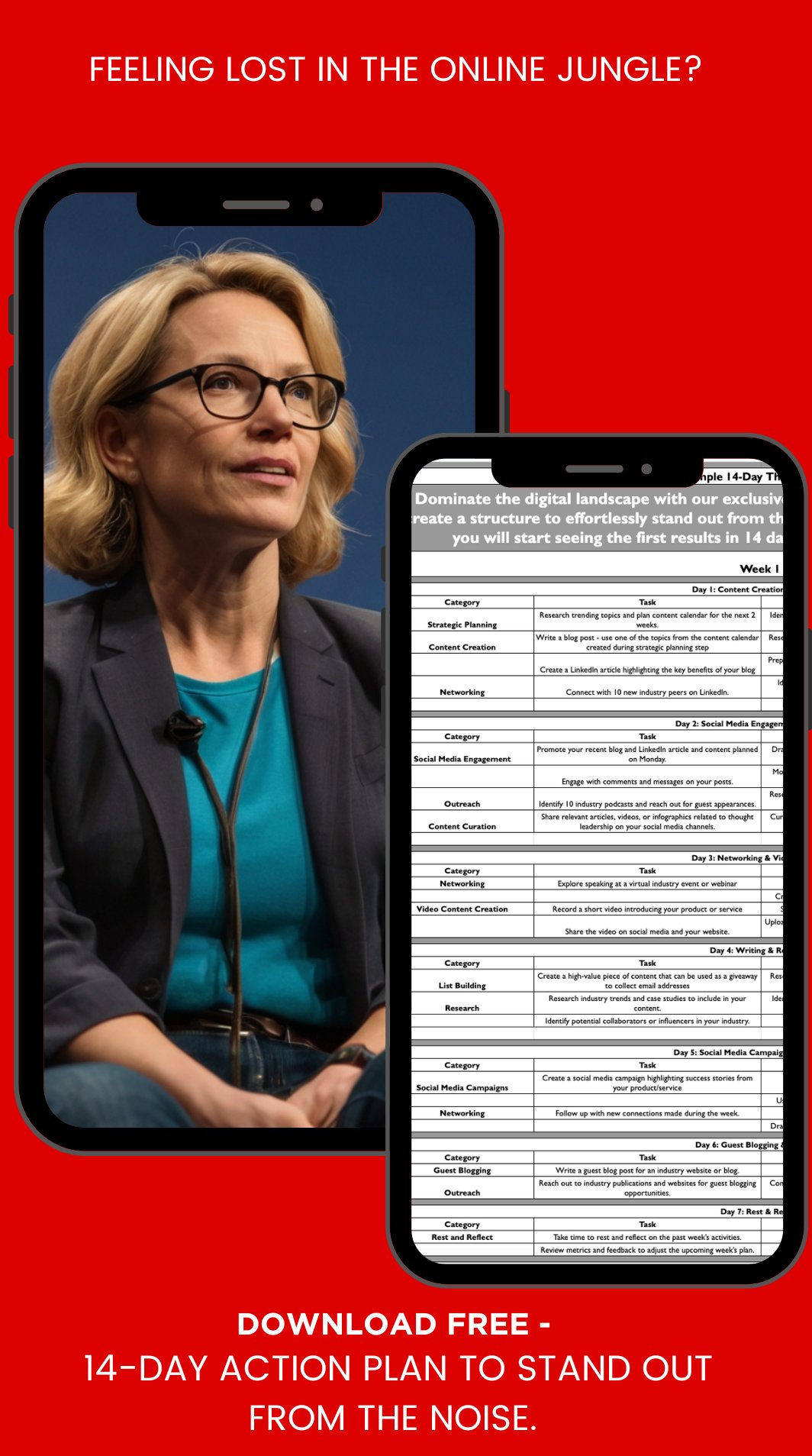Feeling overwhelmed by the recession? Or tired of living paycheck to paycheck? It’s time to get creative and find new revenue streams to overcome the recession! Take a deep breath and focus on what you can control. Start small by setting achievable financial goals and working towards them each day.
There are many different ways to create a successful online business, but there is one thing all successful online entrepreneurs have in common.
They create multiple revenue streams to make sure they can thrive during the down times.
Investing in yourself and learning new skills is a great way to prepare for a profitable future: take online courses or workshops to learn a new skill like coding, graphic design, or copywriting. Or you could read books or listen to podcasts about entrepreneurship or investing.
Offering your skills or services as a freelancer or consultant is a great way to diversify your income sources. If you’re a graphic designer, you could offer your services on platforms like Fiverr or Upwork. Or if you’re a marketing professional, you could offer your services as a consultant to businesses in your area. If you’re a good writer, you could start a blog or offer your services as a freelance writer. If you have a knack for photography, you could sell your photos online or offer your services as a photographer for events or businesses.
Rather worrying about the next pandemic layoff or recession, consider creating multiple revenue streams for your business.
This article helps pros and cons of different models.
Table of Contents
Toggle1 – eCommerce Business Models
eCommerce is a very attractive option . It does not require any specialized skills and takes very little upfront investment to get started. Some options do not even involve dealing with product inventory.
The initial setup is fairly low-cost and many different tools can help you get started.
There are many different versions of eCommerce solutions:
Selling your own products.
This is a great option for people who create their products such as jewelry or clothing designers. eCommerce does not mean that you have to create and sell your own physical products. Selling your own products vis Shopify or WordPress plugins for eCommerce are some of the most popular and well-known eCommerce approaches. You can also see your products on eBay or create an Etsy store.
One of the key advantages of selling your products is the ease of setup: you can create a Shopify store in less than a day. Alternatively, you can join an online marketplace for other designers such as Etsy.
The biggest Shopify or Etsy store advantage is the ease of setup
The challenge is that in addition to creating and promoting your products, you will also have to deal with keeping an inventory, shipping logistics, and returns.
This can be a bit of a hassle if you are trying to be a Digital Nomad who frequently moves from place to place.
These are definitely great options, but there is a lot of overhead in managing the inventory and the entire fulfillment process. There are wide variety of other lower-risk options if you would like to try your hand at eCommerce.
Dropshipping items handled by a 3-rd party
This is an eCommerce model that does not require you to carry a product. In essence, you become a lead generator for a partner who is willing to handle the entire product storage and shipping process. There are many tools and platforms that help you with the research and order fulfillment.
Amazon or Fulfillment by Amazon program (FBA)
This program is great for you if you have a product, but do not want to be involved in the logistical part of it. Amazon will pick, pack and ship your orders. You can even create your own private label brand to sell on Amazon.
Amazon FBA is a program that transfers shipping and handling responsibilities to the Amazon fulfillment centers. It may be a great starter eCommerce choice for a Digital Nomad selling her products.
Amazon FBA program is fairly easy to set up and it helps you overcome most of the biggest logistical challenges related to storing, packing, shipping, and tracking your products.
Amazon FBA program gives you immediate access to the world-class services for storing, packing, shipping, and tracking your products.
The other two huge advantages of using Amazon FBA are the premium customer shopping experience and exposure to their 300 million active shoppers.
The disadvantages are high fees as you pay both for storage and fulfillment and higher return rates that come with the easy return process.
Working with a Print-on-demand or POD to create and sell custom designs
Print-on-Demand is a version of dropshipping where you get to design your own products, but you outsource the production and handling of orders to another company. All you need to do is create amazing designs and market them online. Your print-on-demand parter will take care of the rest.
2 – Content Marketing
Often, there is a bad rap for Content Marketing, mostly because of many people making 2 core mistakes: lacking content strategy and failing to promote content.
A good content strategy does not necessarily mean writing a blog each day.
You can be producing content via your YouTube channel, sharing stories on Facebook, managing Twitter Chats, or growing your Instagram account. Content comes in many different forms.
You do not even have to create unique content.
Content Creation comes in many forms: blog, video, Insta story, curated post …
You can position yourself as a content curator. In a world where there is no shortage of information, a person that curates high-quality relevant, and timely information for their niche audience can be in high demand.
If you love creating or curating great content, you can look into any of these models:
- Affiliate Marketing (via sharing links to a select group of partners or a broad approach via Amazon Affiliates and Click-bank
- Social Media and Influencer-marketing. Once you build a successful social media channel, you can earn revenue by endorsing partner deals via your YouTube or Instagram posts.
- Monetizing your Facebook or YouTube Videos.
3 – Coaching/Consulting
I am willing to bet that each of us has unique passions and skillsets that can help others live a better and more fulfilling life. If you are one of these people who want to help others, consider launching a coaching or consulting business.
Launching a coaching business is relatively easy – you create your website and start offering your time in exchange for $$.
But to succeed as a coach, you will need to remember that your time is your biggest limitation. Most coaches and consultants struggle to scale. Unless they have a team, they can support 10 one-on-one clients at a time. Therefore, creating 1-to-many packages and pricing your services correctly is the key to your success.
By offering the right combination of quality for the price you can build a scalable business.
Scalable Coaching Business means pricing your services correctly and offering 1-to-many programs.
Your options are:
- Group coaching: you may choose to grow and foster a community of people via Facebook groups, newsletter subscriptions, group calls.
- High-ticket coaching: you can offer custom-tailored high-priced programs to just a few customers.
- Infoproducts (courses, books, etc): you can package your knowledge and offer it as information products, including books and training programs.
When you are just starting, you may try one of these options. The secret to success is in re-using and re-packaging parts of your programs to create different options.
For example, you can package some of the tools and templates you use with high-end clients and offer them as information products.
The biggest challenge of all coaches and consultants is lead generation and converting those leads into paying customers.
To succeed as a coach or consultant, you must learn how to attract and convert leads
When things get busy, you focus on serving your customers and neglect looking for new leads, which creates a mad rush of lead-generating activities during slow times. Think about ways to diversify your income via other channels (for example, affiliate marketing)
4 – Freelancing or Digital Agency
This model is somewhat similar to coaching and consulting. The key difference is that you offer “Done for Your” options to your customers.
You may choose to start a solo business and provide services as a freelancer. It is a great model if you do not want to deal with an overhead of training other people, managing teams, dealing with payroll, and other operational challenges.
But your income opportunity may be somewhat limited as you are selling your time.
Your time is the biggest revenue-limiting factor.
Many freelancers who want to grow their income and get a better life balance, expand their business via creating an agency or launching additional revenue streams (e.g. group coaching, info products, affiliate marketing)
The most popular Digital Nomad Freelancer and Agency models are:
- Virtual Assistant
- Marketing and other freelancers
- Web/App/Game development
- Graphic design
- Copywriting
- Advertising Agency
CONCLUSION:
Adding more revenue streams is quite achievable and does not necessarily have to include long hours and lost sleep.
If you focus on the right business model from the start and then learn to diversify your revenue streams over time, you will be on your way to a successful location-independent dwelling.
Now, over to you – I look forward to hearing your Digital Nomad stories – both successes and challenges. Comment below or connect with us on Facebook










